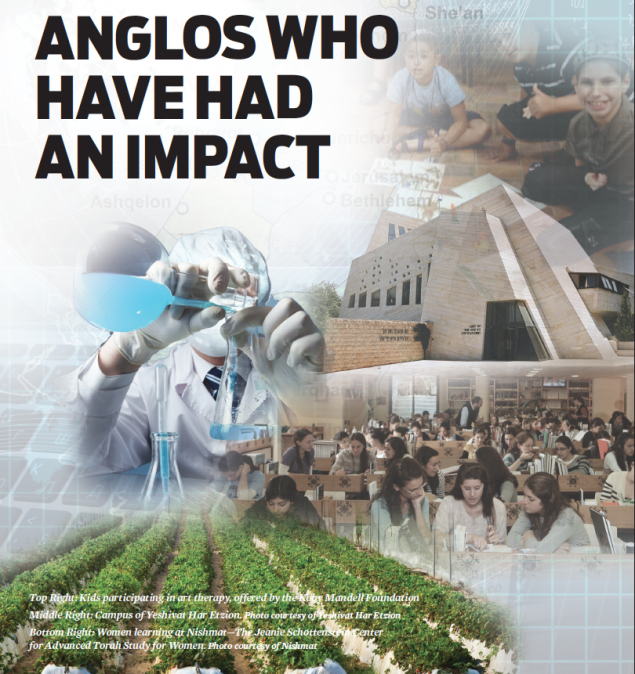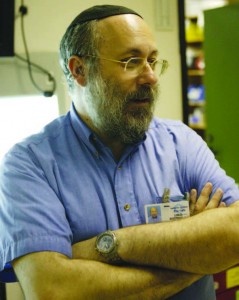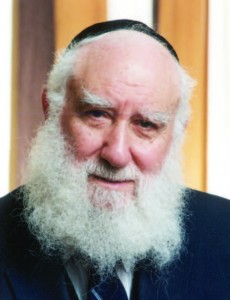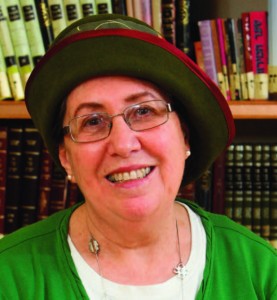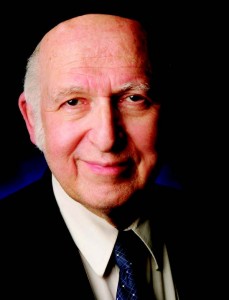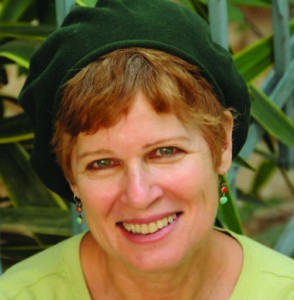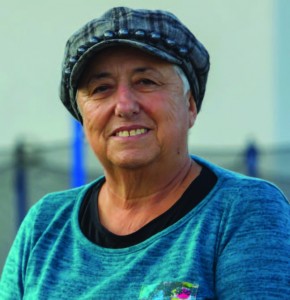ANGLOS WHO HAVE HAD AN IMPACT
In this section, we take a look at Anglos who have had an extraordinary impact on Israeli society be it in education, medicine or the arts, among other fields. No attempt was made to be comprehensive. Rather this is a sampling of a few of the remarkable Anglos who have helped shape Israeli culture in profound ways.
Dr. David Applebaum
By Toby Klein Greenwald
Almost everyone who knew Dr. David Applebaum, a”h, has a story to tell—about how he was ready to help on his off-duty hours if a friend needed assistance, his wonderful sense of humor, his calm in the midst of crisis, his loving devotion to his family, how he put patients and their families at ease or how he taught erudite halachah classes for years at Midreshet Moriah. For in addition to being a renowned physician and innovator, he was a talmid chacham.
Dr. Applebaum was a prodigy who received semichah from Rabbi Ahron Soloveichik, a master’s degree in biology from Northwestern University and a medical degree from the Medical College of Ohio. In 1981, Dr. Applebaum and his wife, Debra Spero, daughter of the well-known Rabbi Shubert Spero of Cleveland, made aliyah and settled in Jerusalem.
Shortly after, he began working at MDA (Magen David Adom). In 1983 he became the director of the mobile intensive care units in Jerusalem and the changes he introduced were responsible for saving many lives. The book edited by Debra in his memory, David Avdi, includes derashot written by him, articles written about him, memories of colleagues and friends and a section documenting his innovations. He conceived of and developed, together with Hadassah Medical Center’s Cardiology Department, a system in which streptokinase (a medication used for heart attack patients) would be administered by physician-led ambulance teams to patients experiencing a heart attack before reaching the hospital, which proved to minimize damage to the heart. He helped draft the Paramedics Law, giving paramedics professional recognition by the Health Ministry. The law was drafted in response to a severe shortage of medical personnel trained in life-saving emergency medicine. It demanded a centralized authority over paramedics, along with a training course. Dr. Applebaum helped develop curricula, taught courses and ensured that his students received real-life experience by volunteering in the emergency room. He raised consciousness about the importance of providing CPR courses to the general public.
Dr. Applebaum became a member of the MDA team that organized and managed medical efforts after terror attacks. At a terrorist attack on King George Street in Jerusalem in 1984, he treated a wounded man under fire, resulting in him receiving the Knesset Speaker’s Prize for Quality of Life.
He also worked in the Shaare Zedek Medical Center’s Emergency Department where he saw severe overcrowding, as in most hospitals. He observed that both minor and serious emergencies were treated in the same location, impairing the staff’s ability to handle the most critical cases. This led to his establishing the Terem Emergency Care Clinics in 1989. Today there are ten Terem branches that have changed healthcare throughout the country by dramatically reducing hospital emergency room visits.
The horror in Israel was palpable when the news became known.
In 2002, Dr. Applebaum became the director of the Shaare Zedek Emergency Department and helped turn it around, enabling patients to be treated more efficiently. He revolutionized emergency medicine and became famous with the creation of a computer system that provided real-time and vital information for every patient in the ER. Debra describes how he always had his computer with him, even when abroad, so he could see what was happening in the ER. His methods were, unfortunately, put to the test when the ER was able to treat large numbers of the victims following terror attacks.
Debra writes, “Anybody who was cared for by David Applebaum felt like he or she was getting preferential treatment.” She also describes how he used to wear sneakers “to demonstrate by personal example to his staff his readiness to run from patient to patient.”
Tragedy struck the Applebaum family and the world of Israeli medicine when Dr. Applebaum, fifty at the time, and his twenty-year-old daughter Nava, a young woman devoted to chesed in her own right, were murdered in a terror attack in Jerusalem on September 9, 2003, the night before Nava’s wedding. (Ironically, Dr. Applebaum had just returned from a conference in New York on terrorism.) The horror in Israel was palpable when the news became known.
Terem produced a film in Dr. Applebaum’s memory, and just as in the book, the admiration, love and gratitude of his colleagues pours forth. Miriam Dombey, who worked as Dr. Applebaum’s secretary at Terem, writes: “He was always one for the dramatic entrance, and here he made a dramatic exit. The kiddush Hashem he made with his death was an extension of his life, because his whole life was a kiddush Hashem. Where there is an explosion, it destroys, but it also gives light. This man had a tremendous amount of light, ohr lagoyim and ohr zaruah latzaddik.”
Toby Klein Greenwald is an educator, a journalist and an award-winning director of the Raise Your Spirits Theatre. She lives in Efrat with her family.
Rabbi Dr. Yehuda Cooperman
By Toby Klein Greenwald
In what was undoubtedly one of the biggest revolutions in women’s Torah study since Sarah Schenirer founded the first Bais Yaakov in Poland in 1917, Rabbi Dr. Yehuda Cooperman launched a new concept in women’s Torah learning in 1964. His vision: to establish an institute of in-depth Torah studies for women that would be founded on the principles of Torah MiShamayim and emunat chachamim; at the same time, it would be recognized as an institution of higher education that grants academic degrees.
“What inspired me to start Michlalah was my experience while teaching in a more modern religious teachers’ college,” says Rabbi Cooperman. “A student in the class said to me, ‘Moreh, you have to know that we were educated to know that we may differ with Chazal.’” That day I resigned. I had thought about [resigning] before that, but I was enjoying [my career]; I was the principal of Boys Town, where I didn’t have to deal with administrative [duties] . . . I was studying in the Hebron Yeshiva kollel in the morning and had chavrutot in the evening. But I felt that something had to be done for women’s education.”
Michlalah Jerusalem College for Women opened its doors with twenty-three students. “[In those days] a young woman who had a high school diploma could attend a teachers’ seminary, but to attend a university, one needed a bagrut [matriculation] certificate. [Many of] the women who came to study [at Michlalah] chose to do so even though they had matriculation certificates,” says Rabbi Cooperman, “some at a very high level. We were the youngest teachers’ seminary in the country and the first one to achieve full academic accreditation.” Michlalah was granted accreditation by the Council of Higher Education of the State of Israel in 1978.
Rabbi Cooperman was born in Dublin to parents who imbued him with a love for chesed, Torah and Eretz Yisrael. He earned degrees in law and Semitic languages from Dublin University. While there he was also involved in the activities of religious youth movements. He continued to study under Rabbi Eliyahu Dessler at the Gateshead Yeshiva, and later under Rabbi Yechezkel Sarna at the Hebron Yeshiva. He earned semichah from Rabbi Sarna and from Rabbi Herzog, the then-chief rabbi of the State of Israel. In 1952, he married his wife, Tzippora, and he returned to Dublin University where he received a master’s degree in Semitic languages and became the first Jew to be awarded the prestigious gold medal for academic achievement, recommended by the same professors under whom he studied Bible criticism and with whom he vehemently disagreed.
Moving to the US, he earned a second master’s in education from the University of Chicago, and, in 1975, a doctorate from the Hebrew Theological College of Skokie for his supra-commentary to the Meshech Chochmah. The Coopermans made aliyah in 1956, and Michlalah became the life’s work of the late Rabbanit Cooperman as well.
Since its inception, Michlalah has graduated more than 15,000 students, many of whom are in positions of education, research and leadership throughout Israel and the world. Five thousand of those women are from abroad, and for a number of years there have also been specialized programs for men. Currently, there are more than 2,000 students in Michlalah’s various programs, which, in addition to limudei kodesh, include the humanities, sciences, arts, expressive therapies and leadership programs, to name a few.
Michlalah was a chiddush, offering Torah study at such a high level for women,” says Rabbi Cooperman.
When asked what he feels are his greatest achievements, he says, “First of all, that my children are all yodei Torah.” Regarding Michlalah, he says his greatest achievements are, “the building of Torah homes by the graduates and Torah mechanchot [educators], and academic recognition by the government for teaching and learning Tanach [despite the fact that the college does not teach Bible criticism]. This is a kiddush Hashem, though, at the end of the third year, I give two lectures on Bible criticism so [my students] will know what it’s about.”
Michlalah is still the eclectic and nonpolitical institute that I remember attending as a student, when we heard lectures from rabbanim across the religious spectrum. “You see every possible hair covering for women [in the classes] and the same [diversity] applies to the men. I recently looked around in the middle of Minchah and noticed there was every possible kind of kippah represented,” Rabbi Cooperman says.
“Baruch Hashem there are wonderful results, and I thank Hakadosh Baruch Hu that I was privileged to be the one to implement this vision,” he says.
Rabbi Cooperman, in his eighties, still teaches four courses at Michlalah and has published many important works, including his commentary on the Meshech Chochmah and one on Seforno. The rav who began it all sees himself primarily as a “moreh b’Yisrael”—a teacher in Israel.
Rabbanit Chana Henkin
By Toby Klein Greenwald
The wonderful rebbetzins and kallah teachers of the past (and present) notwithstanding, the yoatzot halachah are definitely a new breed.
In 1997, Rabbanit Chana Henkin of Nishmat established the Keren Ariel Women’s Halachic Institute to train yoatzot halachah to be a resource for women with questions regarding taharat hamishpachah. She was fully supported, she says, by her husband, Rav Yehuda Henkin, a widely recognized halachic authority particularly known for his piskei halachah pertaining to women. She was joined by Rav Yaakov Varhaftig, a lecturer in halachah at Nishmat who has been the dean of the institute since the beginning.
Rabbanit Henkin received her master’s degree in Jewish history from Yeshiva University’s Bernard Revel Graduate School of Jewish Studies. The Henkins made aliyah in 1972 to Beit She’an, where Rabbanit Henkin was first a teacher and then an assistant principal before the couple moved to Jerusalem. In 1990 she founded Nishmat, an institute for advanced Torah studies for women. Her goal in founding Nishmat was “to open the highest reaches of Torah and halachic learning for women.” There are more than 200 women today learning in its various programs.
The yoatzot program was created due to “a combination of two factors,” says Rabbanit Henkin, “both my own love of learning halachah and the awareness that there was a tremendous amount of suffering and faulty observance that I felt was due to the lack of a female address that understood both the halachot in depth and the way a woman’s body functions. Our yoatzot train in women’s health as well.”
Since the creation of the program, there have been more than 200,000 questions asked of the yoatzot. Today there are eighty-five yoatzot halachah, including one in England, recently appointed by the chief rabbi, and eight in the United States. About 35 to 40 percent of the yoatzot in Israel are Anglos.
“This is a vision that developed over the course of twenty-five years of experience as the wife of a rabbi. I taught in various forums and I saw that most people didn’t really understand what they were teaching, because they weren’t coming in on the ground floor. But the final straw was when I met a friend who started sobbing and said, ‘I can’t live this way any longer.’ She had what she thought was a halachic problem that had kept her and her husband from leading a normal married life for six months. I thought, ‘No one else is going to do this, so I will.’”
Rabbanit Henkin built up a broad coalition of rabbis including Rav Aharon Lichtenstein, Rav Yehuda Amital, z”l, Rav Nachum Rabinowitz and Rav Yaakov Ariel. “Only after the first class was ready to receive their certificates did we start publicizing [the program],” says Rabbanit Henkin. “[The community] saw that these women were a tremendous asset.
“The Golda Koschitzky Women’s Halachic Hotline was born when the husbands of the yoatzot came to me and said, ‘We have no home life anymore!’ Women were calling them constantly. Now there are twenty-five yoatzot who work on the hotline.”
Yoatzot are also reaching out to the secular community. Nishmat was recently awarded the tender of the Ministry of Religious Affairs to train balaniot (mikvah attendants) who work in all the publically funded mikvaot. “This has to do with sensitivity training,” says Rabbanit Henkin. “It’s an opportunity for kiddush Hashem or chillul Hashem, to either sanctify or desecrate God’s name.
The work of a balanit is very difficult,” she says. “We train them so a well-meaning person doesn’t come [across as] overbearing to a secular woman, or to any woman, but [presents] a friendly face of halachah.”
As we consider the many and varied contributions of American olim, primary consideration must be given to those contributions that raise the quantity and quality of harbatzat Torah. In that sphere, many names stand out including Rabbi Nosson Tzvi Finkel, zt”l, Rabbi Nachum Rabinowitz and Rabbi Dov Fendel, among others. However, we have chosen to focus on one rosh yeshivah who made aliyah more than four decades ago: Rabbi Dr. Aharon Lichtenstein. A talmid of Rav Yitzchak Hutner, and of his father-in-law, Rabbi Joseph Ber Soloveitchik, Rabbi Lichtenstein influences thousands of students not only with his tremendous brilliance but also through his personal example of integrity, humility and devotion to Torah learning.
Rabbi Dr. Aharon Lichtenstein
By Elli Fischer
Rabbi Dr. Aharon Lichtenstein, who will be awarded the Israel Prize in Jewish Literature this May, hardly needs an introduction. He is well known as a gadol baTorah of the first rank, the rosh yeshivah of Yeshivat Har Etzion (“the Gush”) and an intellectual heir and son-in-law of Rabbi Joseph Ber Soloveitchik. Though he has been in Israel for over forty years, he continues to exert a profound influence on American Orthodoxy through his writings and lectures and hundreds of disciples in positions of communal and educational leadership throughout the English-speaking world. Indeed, he is no stranger to the pages of Jewish Action. His writings appeared in the magazine as early as fall 1986 and as recently as fall 2013. Much has been written, and has yet to be written, about his erudition, character and methodology. The present task, fortunately for this author, is far more modest than a full treatment of Rav Lichtenstein’s life work. It focuses instead on one aspect of it: his impact on Israeli society.
Among the prominent disciples who spoke at Rav Lichtenstein’s eightieth birthday celebration in May 2013 was Rav Yaakov Medan, who studied under Rav Aharon in the early years of the Gush and now serves alongside him as a rosh yeshivah. Rav Medan noted that until Rav Lichtenstein’s aliyah with his family in 1971, the Israeli yeshivah world viewed Torah as one alternative in an either-or proposition: the more one draws upon other sources, the more one derogates from the Torah. Rav Lichtenstein introduced his students to a universalist dimension—a common humanity and moral sense that forms the substrate upon which a Torah personality is built—that the Jewish people shares with mankind, and about which Rav Aharon believes we can learn from gentile writers and thinkers.
The ideology of Israel’s National Religious community is dominated by the towering figure of Rav Avraham Yitzchak HaCohen Kook. Rav Kook is heir to a long tradition, beginning with Rav Yehuda Halevi, that views Jews and gentiles as being essentially and metaphysically different. To the extent that there is a significant Religious Zionist alternative to Rav Kook, it is largely due to Rav Lichtenstein; if there is a flagship institution that may one day rival Mercaz HaRav in its influence over Religious Zionist education and thought, it is Yeshivat Har Etzion.
Israel’s educational system does not foster well roundedness, and its colleges do not require that its students get a grounding in the liberal arts. This impoverishes the general discourse, as people tend to view issues through the particularly narrow lens of their expertise. In this context, a rosh yeshivah with a PhD in English literature from Harvard offers a compelling alternative paradigm in which excellence in one discipline does not preclude greatness in Torah, and vice versa. To quote Matthew Arnold’s sonnet “To a Friend” (which Rav Aharon himself quoted in a fall 1992 article for Jewish Action, “The Source of Faith is Faith Itself”), Rav Lichtenstein’s “even-balanc’d soul . . . saw life steadily, and saw it whole.”
Rabbi Elli Fischer is a writer and translator living in Modi’in.
Sherri Mandell
By Toby Klein Greenwald
Sherri Lederman Mandell and her husband, Rabbi Seth, made aliyah in 1996, and shortly afterward they moved to Tekoa, overlooking the canyons and caves of the Judean Desert.
It was one of those caves that their son Koby and his friend Yosef Ish Ran were exploring when they were attacked and bludgeoned to death with stones by Arab terrorists on May 8, 2001. They were thirteen years old.
Up until that moment, Sherri had expressed her passion for writing (she has an MA from Colorado State University) by teaching writing prior to making aliyah at the University of Maryland and at Penn State University, writing Writers of the Holocaust and crafting humorous columns. An educator, Rabbi Seth served as the Hillel director at Penn State and later at the University of Maryland.
But Koby’s murder changed everything. Sherri and her husband channeled their unbearable grief into the creation of the Koby Mandell Foundation, which runs healing programs for families who have lost an immediate family member to a terrorist attack or an act of war. Since then, in addition to writing columns in numerous magazines and newspapers, Sherri has become a sought-after speaker.
“Koby’s murder changed me as a person. I became somebody who reached out to others with much less fear because I knew how another person’s kindness had changed me and given me the ability to survive,” says Sherri.
“I used to be scared to speak in front of people, and now . . . because I have a sense of mission,” she says, “I put my fear to the side. I think the main difference in my life now is that sense of mission.”
Her book The Blessings of a Broken Heart was a winner of the 2004 National Jewish Book Award. She received the Jewish Women International’s Women to Watch Award and was also awarded an ADL Partners in Peace Award. She is featured as an expert speaker on the documentary Relentless: The Struggle for Peace in Israel and her book has been made into a stage play. She also wrote a book on resilience, which will come out next year.
“Koby’s murder changed me as a person. I became somebody who reached out to others with much less fear because I knew how another person’s kindness had changed me and given me the ability to survive,” says Sherri. “Our family was surrounded by people who helped us.”
The foundation became a healing place for her. “As I helped others I also understood the depth and need for community. Healing from a tragedy occurs in a community—with others who have suffered the same thing—and one needs to build this community.” She runs an annual summer camp for 400 bereaved children and a camp for American teenagers who volunteer at the camp. Among the foundation’s numerous projects is the Women’s Healing Retreats for Bereaved Mothers and Widows.
Her sense of mission expresses itself also in protests against Israel’s release of terrorists who have committed the most horrific murders. In response to the releases, Sherri created the organization The Cry of the Mothers. “This should not be just a fight for bereaved parents,” she recently told the Jerusalem Post. “It should be a fight for all the people of this country.”
“My vision for the future is that the Koby Mandell Foundation can help every bereaved family find support so that they can grow instead of becoming shattered by tragedy,” says Sherri.
Koby’s murder changed me as a person. I became somebody who reached out to others with much less fear because I knew how another person’s kindness had changed me and given me the ability to survive,” says Sherri.
Anita Tucker
By Toby Klein Greenwald
In 1970, the Israeli government, under Prime Minister Golda Meir, sent pioneer farmers to Gush Katif to re-establish Kfar Darom, originally founded in 1946. For the next thirty-five years, Gush Katif continued to develop with the approval of every Israeli government.
In 2003, the late Prime Minister Ariel Sharon announced his plan for unilateral withdrawal from Gush Katif, which meant the displacement of approximately 9,000 people and the destruction of hundreds of homes and successful businesses.
Among the residents of Gush Katif were Anita and Stuart Tucker, who had made aliyah in 1969. When they first arrived in Israel, they settled in Beer Sheva, where they lived for seven years. They then decided to relocate to Gush Katif. Anita helped found Netzer Hazani, an extraordinarily successful agricultural community whose produce was highly sought after throughout the world. Anita became known as “the celery lady” as her family business produced thousands of heads of celery annually that were exported throughout the world.
“We saw how the bald virgin sand dunes of Gaza turned into a paradise of flowers, trees and vegetables. And we lived in relative peace and mutual respect with our Arab neighbors for almost twenty-five years, until the world began talking about peace, a peace that tore us to pieces,” says Anita.
Anita was always a leader in her community, but her mettle was really put to the test following the withdrawal in 2005. On the day of the withdrawal, the people of Netzer Hazani left their homes, with the now-famous menorah that adorned the top of their synagogue on their shoulders.
“From the moment we were forced out, we spoke only about building anew. We rented land in the Jordan Valley, where no heating system is needed for winter growing, and we set up the cheapest tunnel greenhouses . . . The sole purpose was to keep going, so others in the community would see that one can and must continue.”
During the years that followed, Anita, her husband and her children lived in various dormitories and youth hostels until finally, they were transferred to a temporary caravilla site. Rather than falling apart after the withdrawal, Anita became a central figure in keeping her community united and in rebuilding Netzer Hazani.
“We survived the expulsion . . . because my community [which insisted on staying together] . . . kept ourselves sane with stronger faith than ever,” says Anita. “From the moment we were forced out, we spoke only about building anew. We are working on finding new profitable crops to grow and investors to enable us to do it together, as no one has funds left, surely not after rebuilding their homes. We rented land in the Jordan Valley, where no heating system is needed for winter growing, and we set up the cheapest tunnel greenhouses and planted organic peppers for export. The sole purpose was to keep going, so others in the community would see that one can and must continue. The first time I whiffed the intoxicating aroma of freshly growing pepper plants,” says Anita, “I knew for sure we were still alive and we can and will, b’ezrat Hashem, win the battle of building anew.”
•••
In 2009, Netzer Hazani was reborn on land in the Nachal Sorek area between Ashkelon and Jerusalem in the foothills of the Judean Mountains. Anita moved into her new home and lives next to three of her five children and many of her former neighbors.
“We felt ecstatic to move out of the caravilla [and into our new home in the newly established Netzer Hazani], but then you say, ‘Okay, now what? This is not home. It is not Gush Katif’ . . . the longing can never disappear.
“Today I tell the story of Gush Katif to youth groups from the US—from secular to Chareidi. I speak about the concept of chazon, vision. I say, ‘Do you see the playground there—red, green and yellow? And the children sliding down the slide?’ They run to look and all they see is a field of thorns.
“Then I say, ‘I can see it and, God willing, by the next time you visit me, it will be there!’ You dream, you work hard to make it happen.”
In 2010, Anita was awarded the Moskowitz Prize for Zionism for her work as a trailblazer, leader, rebuilder and spokesperson as well as for creating many new chesed initiatives and business projects. The judges wrote, “With her great belief in the people of Israel, with her eternal optimism and her ever-present smile, Anita has succeeded in restoring hope to many of the former residents of Gush Katif, giving them the faith and the strength to begin anew.”
From the moment we were forced out, we spoke only about building anew. We rented land in the Jordan Valley, where no heating system is needed for winter growing, and we set up the cheapest tunnel greenhouses . . . The sole purpose was to keep going, so others in the community would see that one can and must continue.”

